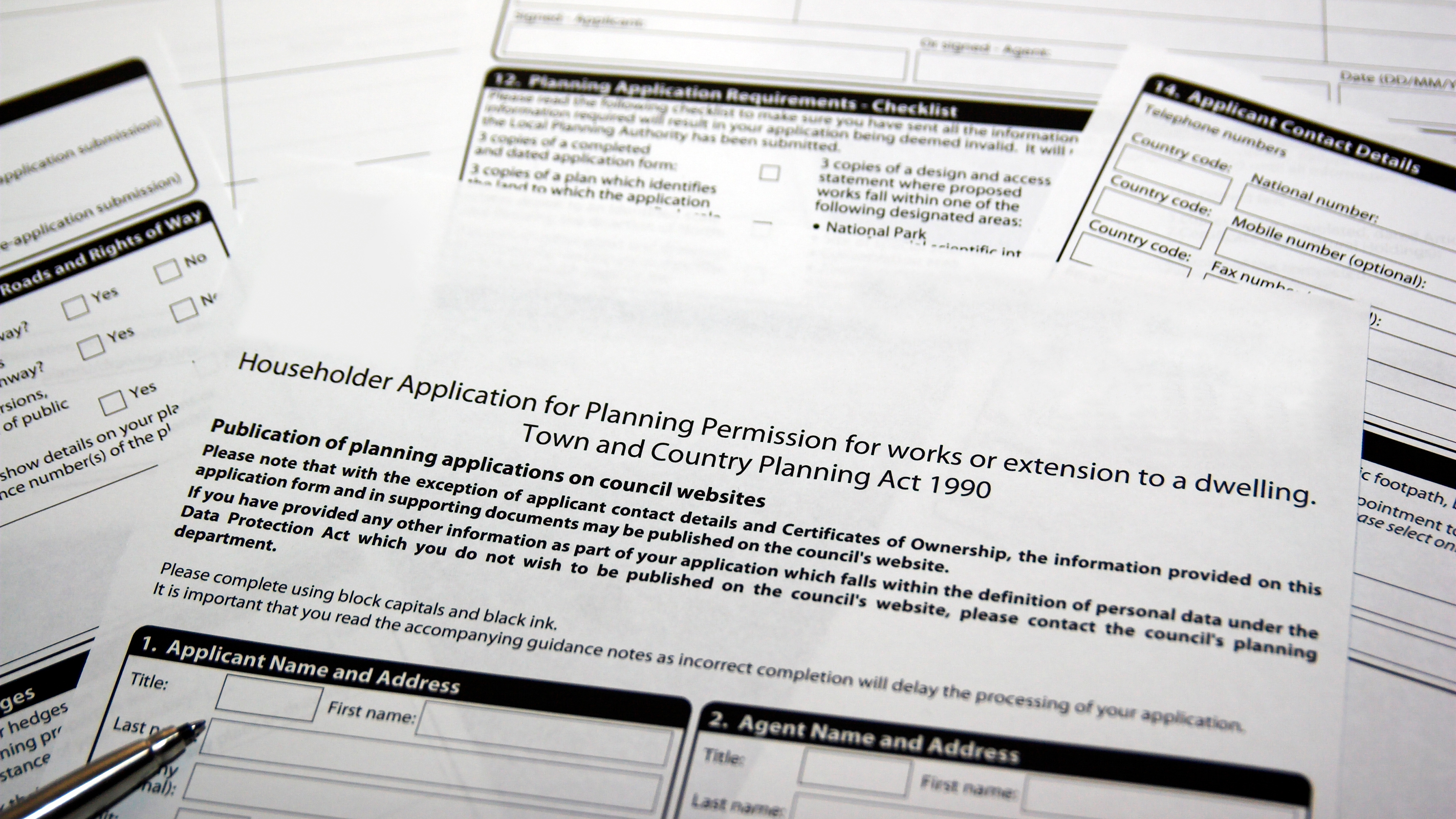Difference Between Planning Permission and Building Regulations
The difference between planning permission and Building Regulations can be the cause of some confusion. Our guide is here to simplify things

For many people, knowing the difference between planning permission and Building Regulations – and when they might need to apply for approval for each – can cause something of a headache. Thankfully, we're on hand to explain everything you need to know.
Our simple guide will not only explain the differences between the regulations and rules, but will also help you understand when you will be required to submit an application for each.
Depending on the nature of your project and the work you intend to carry out, you'll typically find that you need to submit both a planning permission application as well as a separate one for Building Regulations approval — while in other cases neither will be required.
So, if you are about to embark on a self build, renovation, extension or remodelling project, read on to make sure it complies to all the necessary permissions and requirements.
What Exactly Is the Difference Between Planning Permission and Building Regulations?
This is actually not as complicated as it might first appear — planning permission and Building Regulations are two very different things.
It is true that both require you to make an application with regards to carrying out work to your property, but they give authorisation and approval for totally different aspects of building projects. It is important to understand what type of work each applies to and when they might affect you.
When making a planning application you are basically asking whether or not you are allowed to carry out your proposed building work.
Bring your dream home to life with expert advice, how to guides and design inspiration. Sign up for our newsletter and get two free tickets to a Homebuilding & Renovating Show near you.
When you seek Building Regulations approval, you are asking Building Control to check that the work you are carrying out (which should already be allowed under planning permission) meets the acceptable construction standards.
Sometimes you will need both, sometimes just one, sometimes neither — but having approval for one does not ever mean you have approval for the other.
What is Planning Permission?
Put very simply, planning permission is asking the planning department of your local council whether you are allowed to carry out building work. This might be for a self build, or an extension, for example.
Once your application has been submitted, it will either be granted, in which case, subject to any planning conditions being discharged, you can go ahead with the proposed work, or refused, in which case you can't — although you can appeal.
Planning permission should be sought and granted before work begins.
The planning officer in charge of your case will assess whether your planned work meets local and national policies, as well as whether what's proposed would have a detrimental effect on surroundings or neighbours.
When it comes to any questions or queries you might have about planning permission, whether you need it and how to apply, your first port of call should be your local planning authority.

When Is Planning Permission Required?
If you are wondering 'Do I Need Planning Permission?', you should bear in mind that if you plan on building a new dwelling you will almost certainly require permission.
Some bigger outbuildings and extensions will also need planning permission, and if you live in a designated area, such as a Conservation Area, you will be more likely to have to make an application for even small alterations.
However, there is also plenty you can do to your home without planning permission — these are jobs that fall under permitted development.
What Are Building Regulations?
Building Regulations are a set of criteria and standards designed to make sure that properties are safe, comfortable and energy efficient.
The Building Regulations are made up of a set of 'Approved Documents', each relating to different areas of buildings, such as electrics and thermal efficiency.
Unlike planning permission, the majority of building work requires Building Regulations approval, including works such as extensions, garage and loft conversions, fitting new windows or even new heating systems.
It is also useful to be aware that there are two types of Building Regulation applications — Full Plans or Building Notice applications.
In the case of a Building Notice, you can carry out work without first gaining approval, although you still have to inform Building Control of your intentions and fill out an application. They will then visit to check your work complies.
"This can be a risky approach; if the work doesn't comply you will be forced to take remedial action. Building Notices are only really suitable for smaller projects, while for projects such as extensions you're best taking the Full Plans route," says Claire Lloyd, editor of Homebuilding & Renovating.
A Full Plans application is where you submit plans and documents to be approved before starting work, meaning you know from the off that everything has been checked and approved by a building control inspector and that it complies. The officer will then visit the project at key stages.

When Do I Need To Apply For Building Regulations?
If you are self building, your new home will need to meet Building Regulations — a building control inspector will come out at various stages of the build to inspect the work, finally issuing a completion certificate.
If you plan on carrying out any new structural work or alterations to your existing home, you will also need Building Regulations approval.
In addition, any work that involves the following will require approval too:
- Electrics
- Insulation
- Drainage
- Heating appliances
That said, some work such as electrics or installing a woodburner can be self-certified under the competent person scheme. This means a separate trip from a building inspector is not required.
There are a few projects that are exempt from Building Regulations, including conservatories and detached garages under 30m2 and small add-ons such as porches.
Natasha was Homebuilding & Renovating’s Associate Content Editor and was a member of the Homebuilding team for over two decades. In her role on Homebuilding & Renovating she imparted her knowledge on a wide range of renovation topics, from window condensation to renovating bathrooms, to removing walls and adding an extension. She continues to write for Homebuilding on these topics, and more. An experienced journalist and renovation expert, she also writes for a number of other homes titles, including Homes & Gardens and Ideal Homes. Over the years Natasha has renovated and carried out a side extension to a Victorian terrace. She is currently living in the rural Edwardian cottage she renovated and extended on a largely DIY basis, living on site for the duration of the project.

